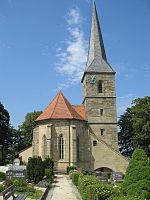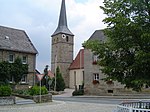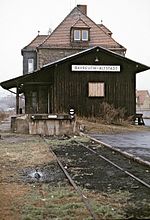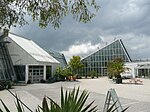Red Main
BayreuthBayreuth (district)Kulmbach (district)Red Main basinRivers of Bavaria ... and 2 more
Rivers of GermanyTributaries of the Main
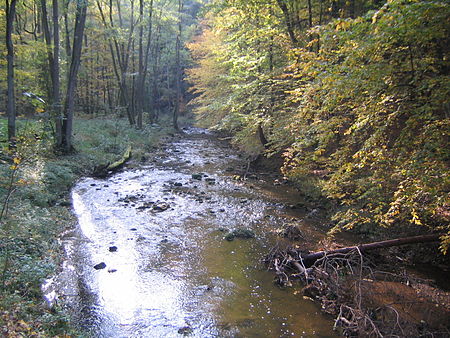
The Red Main (German: Roter Main or Rotmain) is a river in southern Germany. It is the southern, left headstream of the river Main. It rises in the hills of Franconian Switzerland, near Haag and flows generally northwest through the towns Creußen, Bayreuth, Heinersreuth and Neudrossenfeld. It merges with the White Main near Kulmbach to form the Main. The Red Main is 72 kilometres (45 mi) long and descends a total of 283 metres (928 ft). The waters of the Red Main flow through a region of clayey soils, which is why the river carries a lot of suspended solids, especially after rainfall, and acquires a red-brown colour, hence the name Red Main.
Excerpt from the Wikipedia article Red Main (License: CC BY-SA 3.0, Authors, Images).Red Main
A 9, Mistelbach (VGem)
Geographical coordinates (GPS) Address Nearby Places Show on map
Geographical coordinates (GPS)
| Latitude | Longitude |
|---|---|
| N 49.8565 ° | E 11.533194 ° |
Address
A 9
95491 Mistelbach (VGem)
Bavaria, Germany
Open on Google Maps



